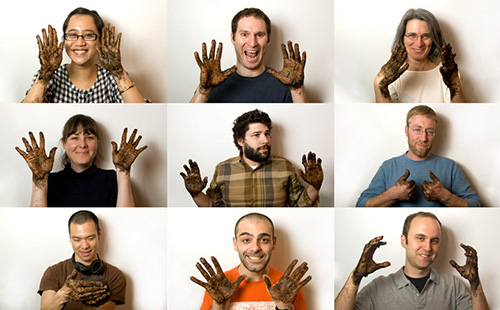Playing the Game of (Your) Life
 Sunday, February 28, 2010 at 10:29AM
Sunday, February 28, 2010 at 10:29AM Jesse Schell’s Future of Gaming
Jesse Schell is a professor at Carnegie Mellon University’s Entertainment Technology Center, founder of Schell Games, and a former Disney Imagineer. He recently gave a presentation at the 2010 DICE (Design, Innovate, Communicate, Entertain) Summit.
The first 20 minutes of the talk are about the unexpected success of Facebook games. Skip all that and watch the last 10 minutes.
Schell’s “Design Outside the Box” Presentation (video).
The Newest in Gaming Technology? Brushing Your Teeth.
Schell paints a picture of what the future may hold due to the ever-decreasing cost of sensor and communication technologies. He imagines toothbrushes, cereal boxes, public transportation, advertisements, books, and essentially every artifact of your life able to score and track points. He predicts that basic sensors and wireless technologies will eventually be so inexpensive and small that they can be embedded in a cardboard box or in a toothbrush. He’s not talking about video games. He’s talking about living your life like playing a game. Brush your teeth? 50 points. Take the bus instead of driving? 100 points. Eat high fiber cereal? 75 points. Ace your exam or totally nail your piano practice? 150 points. Compete with your friends. Why not?
He doesn’t make this, uh, point in his talk, but let me, ahem, point out that much of our retail commerce experience already works this way. Reward cards, frequent flier miles, sweepstakes, and even those foil lids on yogurt cups — aren’t they all a more primitive form of the points-based game systems Schell is describing?
Winning at Life.
Schell suggests a compelling upside — tax breaks, better insurance rates, credits toward scholarships. All by gaming the system, if you will.
What’s the downside? Obviously there’s concern about privacy here. Schell’s response? How many of us know the small details of the lives of our grandparents or great grandparents? Very few. If we know that we will leave a record of our decisions, might we not make better ones? Read more and better books? Watch less and better TV? Treat our bodies better and maybe even one another better?



